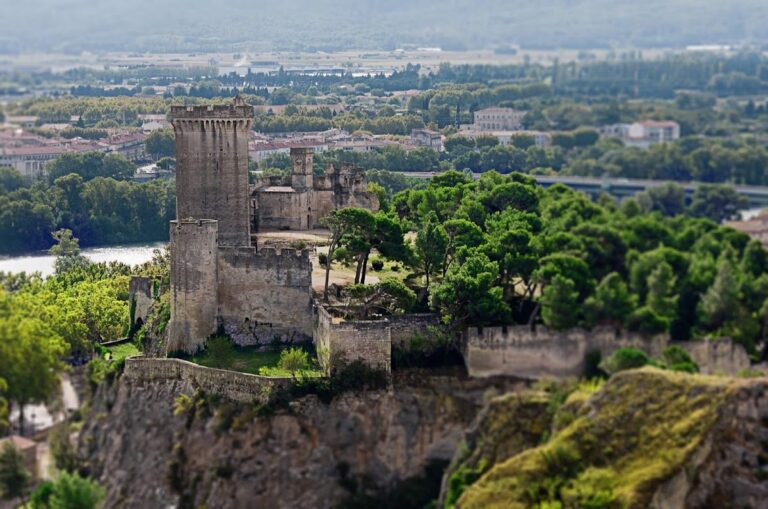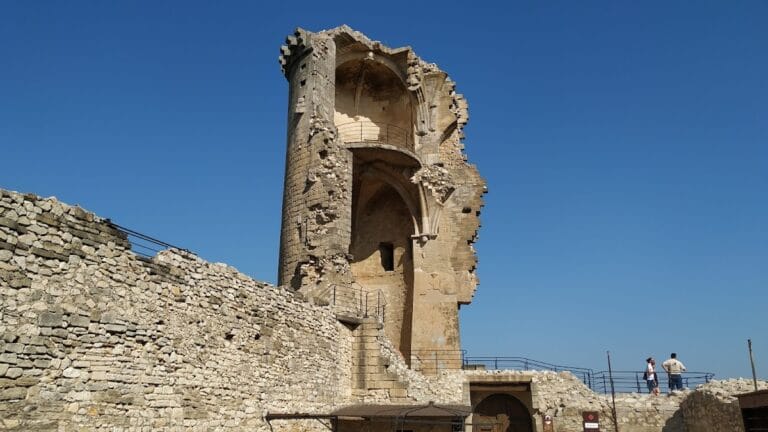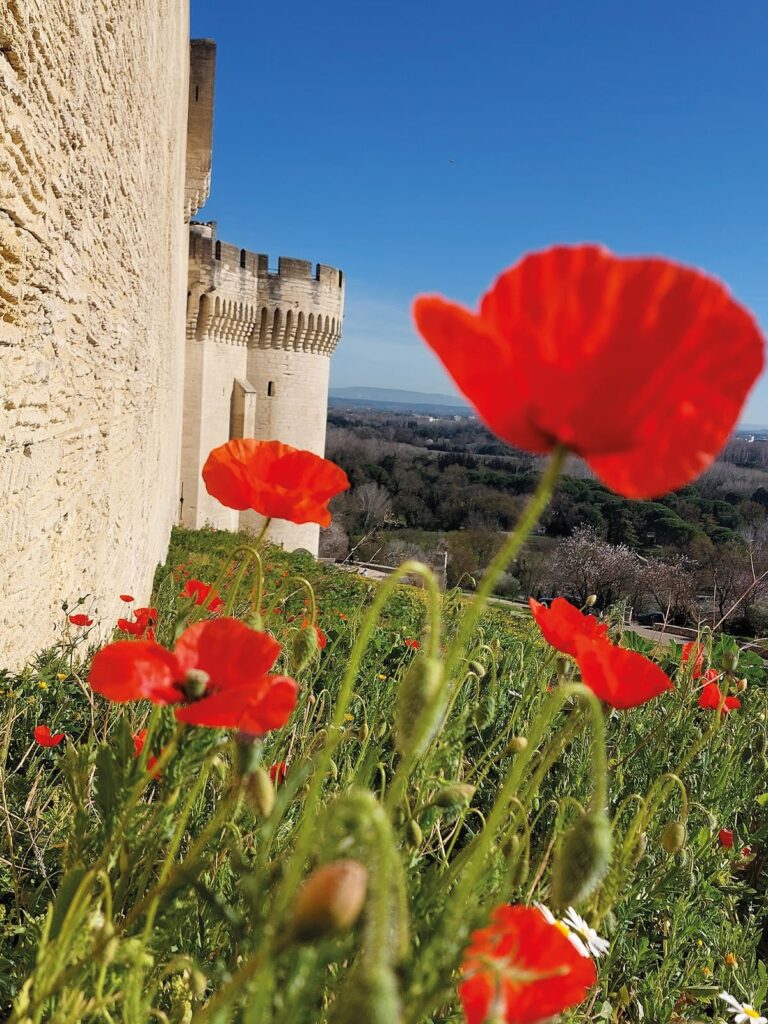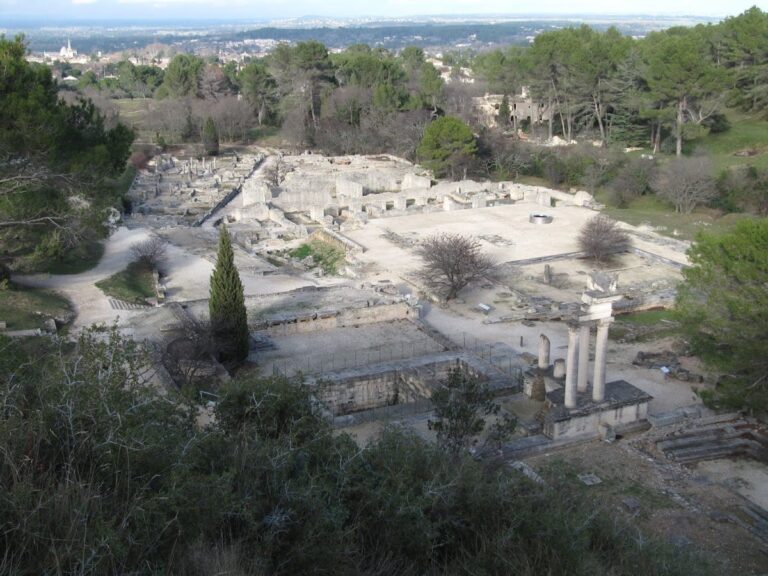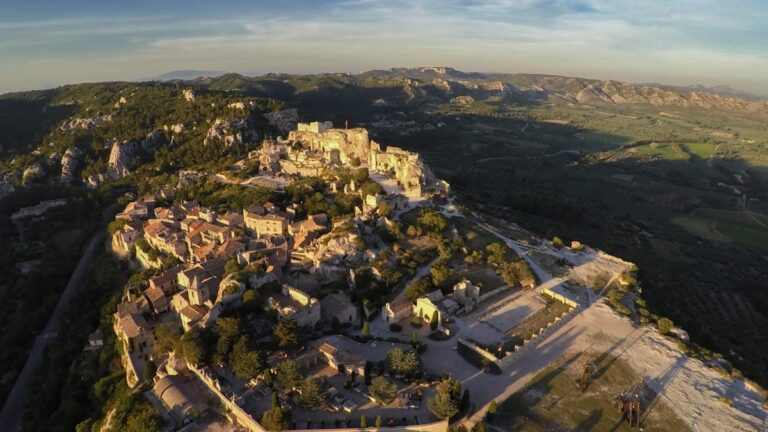Château de Boulbon: A Medieval Fortress in France
Visitor Information
Google Rating: 4.3
Popularity: Low
Google Maps: View on Google Maps
Official Website: chateaudeboulbon.fr
Country: France
Civilization: Medieval European
Remains: Military
History
The Château de Boulbon is located in the municipality of Boulbon, France. This medieval fortress was constructed by the local civilization in the 11th century, serving as a strategic stronghold on a rocky promontory overlooking the Rhône valley. Its position marked the border between the County of Provence and the Kingdom of France, providing control over important trade and political routes.
The castle is first recorded in the year 1003, indicating its early importance in the region. Over the following centuries, it underwent several phases of ownership and modification. The fortress came into the hands of notable figures such as Raymond de Turenne, a nobleman known for his military activities in Provence, and King René, who ruled in the 15th century. In 1608, the lordship associated with the castle was elevated to the status of a county, reflecting its continuing administrative significance. This title eventually passed to the Raousset-Boulbon family in 1784, who maintained possession until the 19th century.
During the 19th century, the Château de Boulbon ceased to be a residence, falling into disuse and ruin. Gaston de Raousset-Boulbon, the last prominent family member, departed to engage in colonial and revolutionary endeavors abroad; he died in 1854. The last count of the castle lineage died without direct heirs in 1956. Since then, ownership has transferred to the La Vaissière de Lavergne family. The site has been officially protected as a historic monument since 1976, with ongoing efforts to preserve its remains and explore its archaeological significance.
Remains
The Château de Boulbon’s layout is adapted to the natural shape of the rock it stands upon. Its enclosure forms a long, narrow courtyard stretching about 45 meters in length and ranging between 9 and 15 meters wide. The fortress is surrounded by thick curtain walls, approximately 1.6 meters in thickness. Notably, these walls lack foundations at their base, a feature that has left them vulnerable to erosion and undermining over time.
At the heart of the castle stands the oldest structure, a rectangular keep or donjon, dating back to the 11th century. This central tower originally had four stories, with one level partly built into the rock beneath. Positioned on its southern side is a small watchtower, designed primarily for observation rather than living quarters, emphasizing the castle’s defensive purpose.
The surrounding curtain walls were constructed during the 13th century, with later additions in the 14th century that include machicolations—openings in the parapets through which defenders could drop objects or pour substances on attackers. These machicolations are decorated with trilobed motifs, a design shared with those found at the Château de Tarascon. Towards the end of the 14th century, the lordly residence, known as the logis seigneurial, was built along with an expansive terrace on the castle’s western side.
The main residential building comprises a substantial two-story structure capped by an attic and contains around thirty rooms. Central within the castle, visitors can observe the remains of a double spiral staircase, accessible from a southern garden. Decorative features include a water buffet—a type of basin or fountain—and sculpted rock formations integrated into the site.
A notable advanced feature of the château is its water supply system from the 15th century. Fed by a natural spring, this system used glazed terracotta pipes to channel water into the living quarters. There, water passed into small settling basins to remove impurities before overflowing into wash basins located beneath terraces, with the surplus water carefully drained away. Traces of these water conduits can still be seen in the walls of the lordly residence.
In the 17th century, the castle’s surroundings were enhanced with terraced gardens and the construction of a carriage road leading to the northern gate, indicating adaptations for both aesthetic and practical access needs. Today, the Château de Boulbon remains in a ruined state, mainly due to pillaging and neglect following its abandonment, though ongoing conservation seeks to stabilize and preserve what survives.


